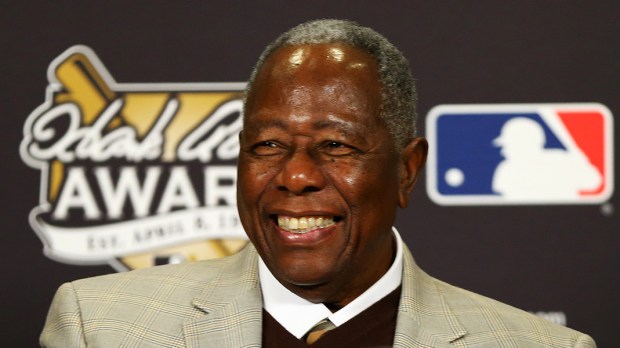April 8, 1974, was one of the high points of Henry Aaron’s life. That night, Aaron, who died on Friday at 86, surpassed Babe Ruth’s lifetime record with his 715th home run.
But 16 years earlier, Aaron and his wife, Barbara, were in the depths of anguish. Barbara had given birth to twins prematurely, Gary and Lary, on December 15, 1957, but a few days later, Gary died. Lary was clinging to life at St. Anthony’s Hospital in Milwaukee.
Barbara’s nurse was a Catholic and told her newly-ordained parish priest, Fr. Michael Sablica, about the couple’s ordeal. This was long before HIPAA privacy laws would have forbid such a move. Fr. Sablica, himself an athlete, went to the hospital to express his condolences.
The two men developed a friendship, often playing handball at Marquette University, where Sablica had played football years earlier. The priest found the ballplayer to be open to conversations about religion.
“Henry told Sablica that while he had been raised in the traditions of the southern black church, he had been intrigued about other religions and denominations,” Howard Bryant wrote in his 2010 biography of Aaron, The Last Hero. “Whether this interest was a direct by-product of Gary’s death or Lary’s struggle to survive — or merely because he saw an opportunity to increase his own religious knowledge — Henry seemed open to the teachings of Catholicism, certainly willing to expand his worldview beyond baseball and the safety and comforts of his own situation. One day, after a round of golf, Father Mike noticed a small book Henry kept in his glove compartment; it was titled The Life of Christ.”
Bryant doesn’t mention whether it was Fulton Sheen’s Life of Christ, which was first published in 1958, or any one of a number of other authors who penned a Life of Christ. Efforts to reach the ESPN columnist on Friday were unsuccessful. According to Catholic News Service, the Aarons were received into the Church in 1959, though Hank Aaron later became a Baptist. The couple divorced in 1971. Aaron is survived by his second wife, Billye.
Church fighting racism
Back in Milwaukee, Fr.Sablica would remind Aaron to “attend Mass every Sunday” when he left for spring training in Florida. But, according to the 1972 book Bad Henry, Aaron “looked his friend in the eye and answered softly, ‘Down there, they won’t let me go to Mass.’”
And that was another topic Sablica wanted to broach with Aaron, the issue of racism. Sablica took a “passionate interest in the fight for equal rights,” Bryant wrote. Aaron and his wife were in Milwaukee for about four years when the priest met them, and they were ready to buy a house. Both Aaron and Sablica were keenly aware that it wasn’t easy for a black family to buy a property in a white neighborhood, and even if Aaron’s growing fame as a member of Milwaukee Braves team would help him, he knew that the vast majority of members of his race would never be treated as well.
“Sablica held to a singular conviction: The Catholic Church could be a powerful instrument in the advancement of the black cause,” Bryant wrote. “It was only through Catholicism, he told Henry, that blacks could achieve the dignity and rights that had long been outside of their collective reach. It was a point he stressed to Henry during the spring of 1958.”
Aaron had already encountered a ton of discrimination. Born February 5, 1934, in Mobile, Alabama, he lived in a world of rigid segregation and humiliation for blacks. Going from the Negro League to the minor leagues, he often had to put up with verbal abuse from people attending games in the South. Even later, when he surpassed Babe Ruth’s record, he faced death threats, as he told the New York Times.
But hearing Fr. Salblica talk about racial issues in 1958 was significant.
“The attitude Sablica projected reflected Henry’s own belief system, and perhaps for the first time in Aaron’s life, it was being amplified and articulated by a white man,” Bryant wrote. “Father Mike had been voicing a message in Milwaukee that was slowly being formulated across the country, led not by the Catholic Church but the black Baptist churches in the South: It would be the clergy who would fuse the dual purposes of religion and social justice. It was a message that immediately appealed to Henry. He had long been awaiting its arrival.”

